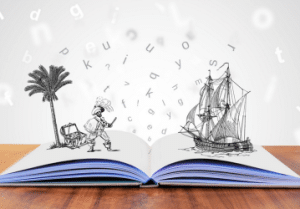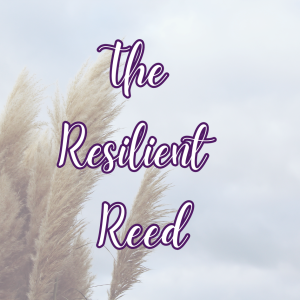The Power of Fable
 The Timeless Power of Fables: Teaching Life’s Lessons through Stories
The Timeless Power of Fables: Teaching Life’s Lessons through Stories
Fables, those short and captivating tales featuring talking animals or mythical creatures, have been a cornerstone of storytelling since ancient times. Combining entertainment with moral lessons, fables have transcended generations and cultures, imparting wisdom and guidance to both young and old. This blog looks at the enduring power of fables and why they continue to be relevant in the modern world.
Universal Themes
Fables are well known for their ability to address universal themes and human experiences. Whether it’s Aesop’s fables or stories from various cultures, these narratives touch upon timeless concepts such as greed, kindness, honesty, and perseverance. By distilling complex ideas into relatable scenarios, fables provide a mirror through which readers can reflect on their own actions and attitudes.
Simplicity with Depth
The beauty of fables lies in their simplicity. With concise narratives and often anthropomorphic characters, they can be enjoyed by people of all ages and backgrounds. Yet, beneath their surface simplicity, fables carry layers of depth. Readers are encouraged to delve into the symbolism and allegorical meanings, stimulating critical thinking and interpretation.
Learning through Indirection
Unlike direct lectures or didactic teachings, fables use the power of indirection. They allow readers to draw their own conclusions and make connections between the story and real life situations. This engagement leads to a more profound understanding and ownership of the lessons learned, fostering personal growth.
Cultural and Moral Diversity
From the ancient Greek fables to African folktales and Asian parables, fables come in a myriad of cultural flavors. Each culture’s fables reflect their unique values, traditions, and social norms. Exploring these diverse narratives can cultivate cultural awareness and empathy, enabling readers to appreciate different perspectives on ethical matters.
Engaging for All Ages
Fables are not limited to a particular age group. They capture young minds with vivid characters and imaginative scenarios, planting seeds of morality and ethics early on. Simultaneously, adults find value in revisiting fables, gaining new insights as their life experiences evolve.
Application in Modern Life
While fables often have historical origins, their lessons are remarkably applicable in today’s world. In an era of rapid technological advancement and shifting societal norms, the fundamental values conveyed by fables remain steadfast. They serve as a compass to navigate contemporary challenges and dilemmas.
Inspiring Creativity
Fables offer a treasure trove of inspiration for writers, artists, and creators. Many authors have reimagined classic fables, adding modern twists or adapting them to different settings. This demonstrates the enduring flexibility of fables and their ability to inspire fresh perspectives.
In a world inundated with information and entertainment, the power of fables endures. These stories, enriched with moral wisdom, continue to spark conversations, provoke thoughts, and shape character. As we journey through life’s complexities, fables remain steadfast guides, reminding us of the values that connect us all as human beings. So, whether you’re reading to a child or contemplating the lessons yourself, the timeless allure of fables remains a beacon of light in an ever-changing world.
We tell stories all the time. About ourselves, about the business. Make them count!
 The Resilient Reed: A Fable
The Resilient Reed: A Fable
A long time ago, in a tranquil valley surrounded by towering mountains, there stood a lush and vibrant forest. Within this forest, there lived a community of animals who had learned to live in harmony with one another. Among them was a wise old owl named Orla, who was known throughout the valley for her wisdom and kind heart.
One breezy morning, as the sun painted the sky with hues of gold and orange, Orla gathered the animals under the ancient oak tree at the heart of the forest. She cleared her throat and began to speak.
“My dear friends,” Orla began, “today I want to tell you the tale of the resilient reed. Once, there was a reed that grew by the side of a gentle stream. This reed was unlike any other in the forest, for it was not the tallest, nor the strongest, but it had a remarkable quality—resilience.”
The animals listened intently as Orla continued.
“One day, a great storm descended upon the valley. The wind howled, the rain poured, and the stream swelled into a raging river. Many of the trees around the reed were uprooted, their branches snapped, and their leaves torn away. But the reed, though bent nearly to the ground by the ferocious wind, remained firmly rooted.”
The squirrel, perched on a branch, asked, “But how did the reed survive?”
Orla smiled kindly and replied, “Ah, my little friend, it was the reed’s resilience that allowed it to endure. You see, instead of fighting the storm, the reed swayed with the wind. It bent and flexed, but it never broke. And when the storm finally subsided, the reed stood tall once more, its spirit unbroken.”
The rabbit, sitting at the base of the oak tree, asked, “But what can we learn from the reed’s story, wise Orla?”
Orla nodded and continued, “My dear friends, just as the reed faced the storm with resilience, so too must we face the challenges that life presents. Resilience is not about being the strongest or the fastest, but about adapting and remaining steadfast in the face of adversity.”
The forest animals exchanged knowing glances, understanding the lesson Orla was giving them.
“In times of difficulty,” Orla continued, “we must bend like the reed, letting ourselves feel the challenges and the pain, but never allowing them to break our spirits. Resilience means finding the strength within ourselves to weather the storms, to adapt, and to grow stronger from the experience.”
And so, the animals of the forest embraced the story of the resilient reed. They learned to face life’s challenges with a spirit of adaptability, perseverance, and unity. In times of trouble, they would recall the tale of the reed and find inspiration to stand tall once more.
And from that day on, whenever a storm raged through the valley, the animals would gather around the reed that had weathered the greatest tempest of all. Its slender form became a symbol of resilience, a reminder that even in the face of life’s storms, they too could endure and flourish.
And so, dear reader, let the story of the resilient reed remind you that true strength lies not only in unyielding might but in the capacity to bend without breaking. Embrace life’s challenges with resilience, and like the reed by the stream, you shall find your way through even the fiercest storms.



